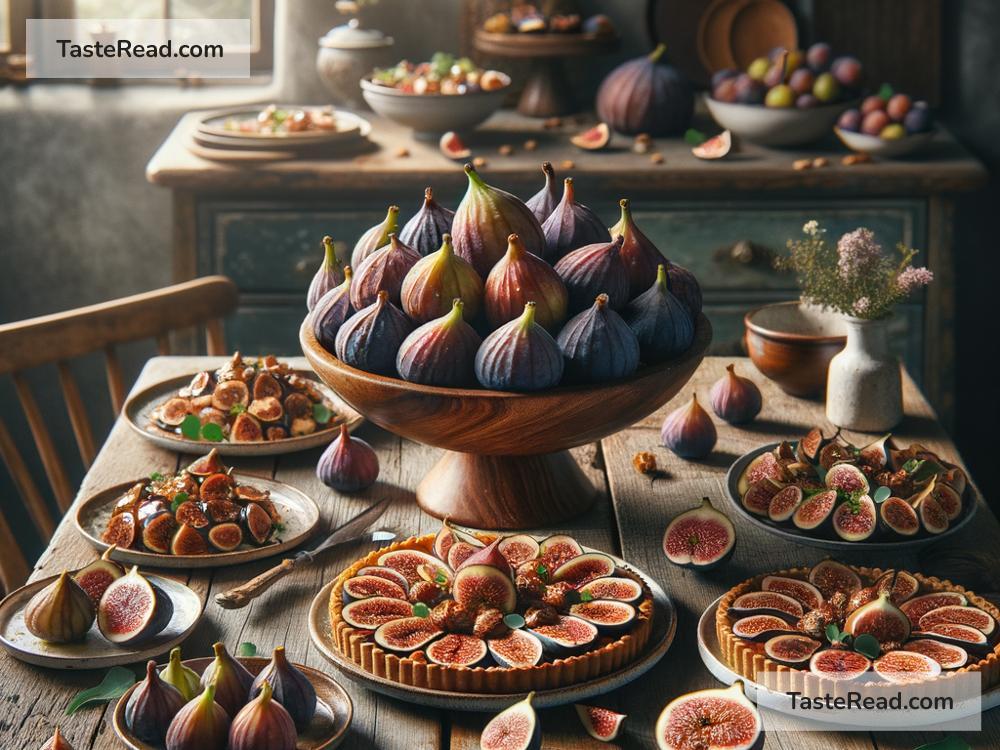How Figs Became a Culinary Favorite
Figs are one of those magical fruits that have been loved for centuries. Sweet, soft, and full of history, they have found their way onto plates across the globe, used in everything from desserts to savory dishes. But have you ever wondered how figs became such a popular ingredient? Let’s dive into their story and discover why these little gems are cherished everywhere.
The Ancient Beginnings of Figs
The love for figs isn’t new—it dates back thousands of years. Figs are believed to have been one of the first fruits ever cultivated by humans. They originated in the Middle East and Mediterranean regions, areas famous for their warm, sunny climates, which are perfect for growing figs. As civilizations developed, the fig tree played a big role in their diets and cultures.
In ancient times, figs were seen as a symbol of abundance and health. The fruit was mentioned in religious texts, including the Bible, and in the stories of ancient Greek and Roman mythology. The Greeks believed figs were a gift from Demeter, the goddess of agriculture. The Romans loved figs so much that they fed them to their elite gladiators before competitions, believing they provided strength and energy.
Figs were also highly valued for their practical uses. Fresh figs were enjoyed for their natural sweetness, while dried figs were a convenient way to preserve the fruit for long journeys or harsh winters. This made them essential for both survival and as a treat.
A Nutritional Powerhouse
One reason figs have remained popular is their nutritional value. Figs are packed with fiber, vitamins, and minerals like potassium, calcium, and iron. They’re naturally sweet, which means they can satisfy sugar cravings without being loaded with artificial additives. Ancient people didn’t know the science behind figs, but they could see the beneficial effects of eating them.
Today, figs are still celebrated as a healthy choice. They support digestion, improve heart health, and provide a quick energy boost. This makes figs a favorite among health-conscious food lovers who appreciate their delicious taste and wholesome benefits.
Crossing Continents and Cultures
As trade routes expanded, figs traveled far and wide. Traders introduced them to new regions, and people quickly fell in love. In Europe, figs became a prized ingredient in royal kitchens. In Asia, they were blended into sweet sauces and rich desserts. By the time figs made their way to the Americas, they had already earned their title as a luxurious fruit.
One key moment for figs was when Spanish missionaries brought them to California in the 18th century. They introduced the “Mission fig,” a variety that is still grown and adored today. California’s climate was perfect for fig farming, and over time, the state became a hub for fig production, with millions of pounds harvested each year.
A Star in the Culinary World
Part of what makes figs so special is their versatility. They can be eaten fresh, dried, roasted, or even made into jams and syrups. Their unique texture—soft flesh and tiny seeds—creates a delightful eating experience. And their flavor? It’s a perfect balance of sweetness and subtle earthiness.
Chefs around the world have embraced figs for their ability to enhance both sweet and savory dishes. They pair wonderfully with cheese, especially creamy or tangy varieties like goat cheese or blue cheese. Figs and honey are a match made in heaven, whether drizzled over yogurt or baked into pastries. In Mediterranean cuisine, figs are often wrapped in prosciutto or added to salads for a burst of sweetness.
On the dessert side, figs take center stage in tarts, cakes, and pies. Their natural caramel notes make them a favorite ingredient for baking. Dried figs are often chopped and mixed into oatmeal cookies, energy bars, or trail mixes, providing a chewy texture and rich flavor.
A Fruit with Cultural Charm
Figs are more than just food; they are steeped in tradition and culture. In some parts of the world, figs are associated with family gatherings and festivities. For example, in Italy, fig trees are often found in backyard gardens, and the fruit is shared among loved ones. In Middle Eastern culture, figs frequently appear during holidays and in recipes passed down through generations.
This cultural significance adds to the “magic” of figs. They’re not just an ingredient—they’re a connection to history, family, and tradition.
Why Figs Will Always Be Loved
There’s something timeless about figs. They’re simple yet sophisticated, healthy yet indulgent, and versatile without being complicated. Whether you’re eating them fresh off the tree or enjoying them in a gourmet meal, figs make every bite feel special.
So, the next time you find yourself savoring a fig, take a moment to appreciate its journey. From the ancient Mediterranean to modern kitchens worldwide, figs have earned their spot as a culinary favorite. Their rich history, nutritional benefits, and irresistible flavor mean they’ll likely remain beloved for many years to come. Whether you’re a foodie or just looking for a healthy snack, figs are a fruit worth celebrating!


